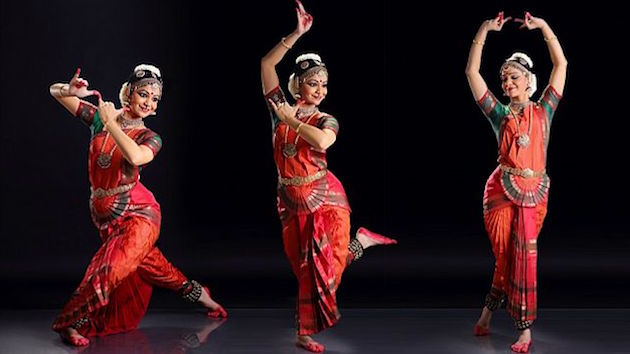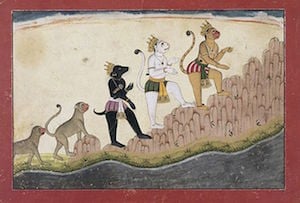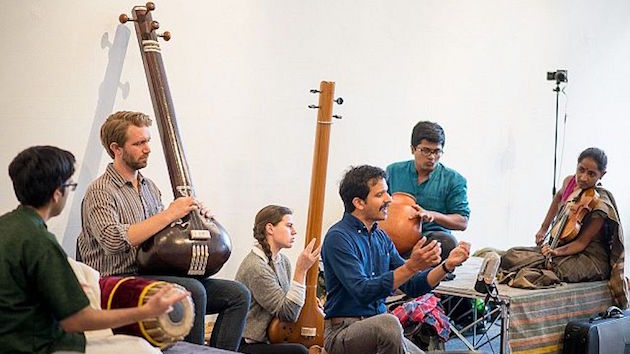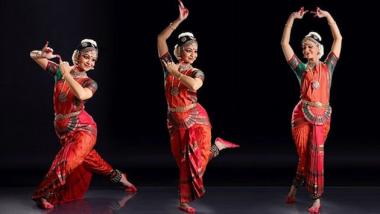
On Oct. 23, the Asian Art Museum will host a day of music, dance, storytelling, and hands-on art-making to mark both the Hindu Festival of Lights and the museum’s exhibit of “The Rama Epic: Hero, Heroine, Ally, Foe.”
Divali, which falls on Oct. 30 this year, is celebrated far beyond India -- it is an official holiday in Fiji, Guyana, Pakistan, Malaysia, Mauritius, Myanmar, Nepal, Singapore, Sri Lanka, Suriname, and Trinidad and Tobago. The festival observes the victory of light over darkness, good over evil, knowledge over ignorance, and hope over despair.

The essence of “The Rama Epic” parallels Divali, with the Ramayana’s ancient account of Prince Rama’s rescue of Sita, his abducted wife, with help of the monkey warrior Hanuman, against the evil, 10-headed demon king Ravana.
The Divali-Rama connection is explained by Forrest McGill, Wattis Senior Curator of South and Southeast Asian Art, who is responsible for the Rama exhibit: “For many Indians and people of Indian heritage an important association of Divali is that it commemorates the triumphant return of Rama and Sita to the capital after their long exile.”
The museum event begins at 10:30 a.m., with free admission, courtesy of Target stores, and a tour for kids, ages 3 to 6, starting from the information desk in Bowes South Court, storytellers sharing myths and folktales from across South and Southeast Asia while looking at art in the galleries.
Gautam Tejas Ganeshan leads a concert of new Carnatic music (ragas and talas -- melodic scales and rhythmic cycles) from 11 a.m. to 1 p.m. on the museum steps in the tradition of pandal, or open-air concert. Ganeshan will lead the performance alongside a classical ensemble of tambura, mridangam, and more.

All through the event, from 11 a.m. to 4 p.m., the museum’s North Court will be used to guide young people in a variety of hands-on art-making, including diya lamps, Divali greeting cards, a community rangoli, and more. The activities are led by the museum’s Art Speak teen interns, in partnership with the India Community Center and San Francisco Brahma Kumaris.
Allison Wyckoff, of the museum’s Education and Public Programs, calls special attention to the 1 p.m. “Rama Storytelling Tour,” which is “for all ages -- not just kids -- and features scenes from the Ramayana, such as the Abduction of Sita. The tour offers a great introduction to the epic for those unfamiliar as well as those wanting to reintroduce themselves to the story.”
Two feature performances will be held in Samsung Hall, the first from noon to 1 p.m. and the second from 2 to 3 p.m.: dancer Navia Natarajan will depict scenes and main characters from the Ramayana, in the Indian classical dance style of Bharatanatyam.
Mehndi or henna tattooing will be available from noon to 4 p.m. in the loggia for those signing up in advance, first come, first served.
Storytelling for families and chai tasting (courtesy of local vendor The Chai Cart) will be available in the afternoon, and then from 3:30 to 4:30 p.m. Gautam Tejas Ganashan will lead an Indian classical singing workshop -- no prior experience or language knowledge is necessary.
McGill says of the Rama epic:
It has always been a multimedia tradition, and still is today. Its exciting, touching, morally uplifting episodes have been recounted, sung, enacted on stage, danced, performed as classical puppet theater, and, in recent decades, presented in TV serials, movies, and video games. Visual artists too have engaged with the epic, presenting it in a wide range of mediums from sculpture and architectural reliefs to paintings to ivory carving.
Visitors to the show will see superb artworks in all of these mediums brought from museums around Europe, Britain, and the US. Throughout the galleries video clips of TV serials and classical, court, and folk performances highlight how performing artists have interpreted key episodes such as the abduction of the heroine Sita by the king of the demons, whose evil power threatens the world.

